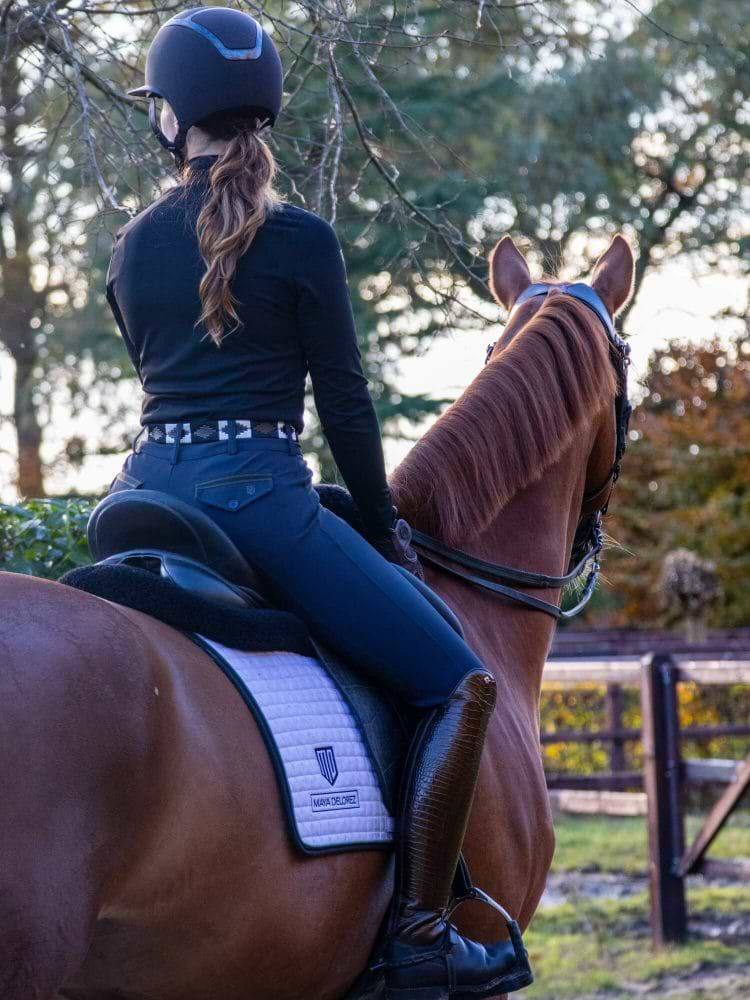Equestrian Health
Tips From a Physiotherapist
Equestrian physiotherapy secrets with Maxime Osse, Dutch dressage rider and physiotherapist. From common challenges to posture tips, get the full scoop here!
Erika
Fri 8 Mar - 24

Equestrian Health
Tips From a Physiotherapist
Equestrian physiotherapy secrets with Maxime Osse, Dutch dressage rider and physiotherapist. From common challenges to posture tips, get the full scoop here!
Erika
Fri 8 Mar - 24
We're always on top of making sure our horses are in optimal health, receiving the best treatment and care. But what about us as riders? We chatted with Dutch dressage rider, equine osteopath, and human physiotherapist Maxime Osse, to dive into the often-overlooked aspects of equestrian well-being. From common challenges like back, neck, and shoulder issues to the crucial role of posture, Maxime shares valuable insights into rider health. Join us as we discover how taking care of ourselves is just as essential as caring for our horses. 👇
What problems do many riders face that require physiotherapy?
– From my experience as a physiotherapist working with equestrians, back pain is a common issue, and the specific location can vary based on the rider's position. Neck and shoulder pain are also frequent problems, often linked to the rider's position. In some cases, these issues may require treatment by a physiotherapist, especially when complaints become significant, and range of motion is restricted. Many of these issues stem from poor posture while riding, leading to imbalance and concentrated stress on certain areas of the back.
Why do these problems occur?
– These issues can show up when there's already a problem in your body, and riding brings it out more. Other times, the problems pop up while you're riding because of your muscle condition or if you have a “bad” posture. As I mentioned before, maintaining a balanced position on the horse is crucial, not only to synchronize with the horse's movements but also to absorb the impacts the horse causes on the body.
“For the good of you and your horse, take your time to warm up.”
– Maxime Osse
How can riders prevent these issues?
– If you already experience discomfort when not riding, such as pain, stiffness, limited range of motion, or significant asymmetries, it's advisable to consult a physiotherapist to identify any blockages in your body. For those whose back, shoulder or neck pain results from inadequate physical condition, adding additional exercises alongside riding can enhance overall fitness. You could, for example, go to the gym and ask for a training program which is adapted to you personally. If poor posture is the culprit, I would recommend core-stability exercises to improve your posture. Also, ask your trainer to really watch your posture on your horse, so your seat is well balanced, and your weight and the movements of your horse are well distributed throughout your whole body.
– Besides being a physiotherapist, I also worked as a seating coach for riders. I used to work with a Flexchair which showed people their asymmetries and limitations in their movements, which we could then address on horseback. If you feel like you still have some trouble finding the right posture, a seating coach could help a lot.
Can you share some tips for staying fit and ready for riding?
– Apart from maintaining a healthy diet and getting enough sleep, it's crucial to prioritize self-checks just as you do for your horse. Even if you experience minor discomfort while riding, a visit to a physiotherapist or osteopath for a check-up is a good idea. Make sure that your fitness level matches that of your horse, and if you're not quite there yet, do some extra exercises alongside riding so you can keep up.
How important is warming up for riders?
– It's as important as warming up your horse. What many riders forget is that when we warm up our horses, we're also getting ourselves ready. So, for the good of you and your horse, take your time to warm up.
Thank you for your professional insights, Maxime! 🖤
